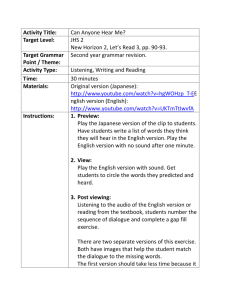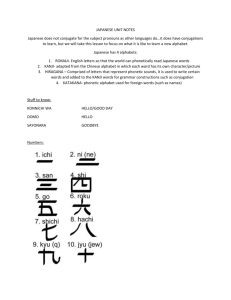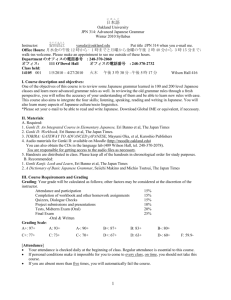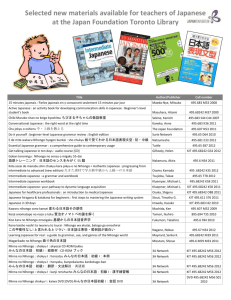Japanese 9 course outline - Mr. Wilson`s Classes at Kwalikum
advertisement
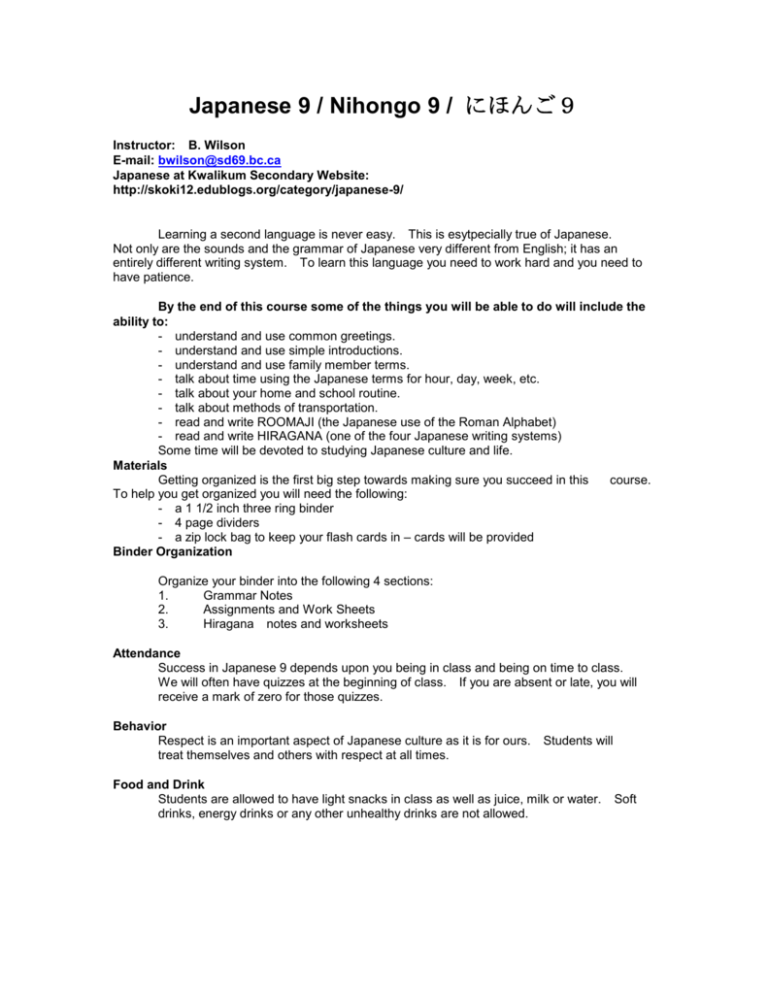
Japanese 9 / Nihongo 9 / にほんご9 Instructor: B. Wilson E-mail: bwilson@sd69.bc.ca Japanese at Kwalikum Secondary Website: http://skoki12.edublogs.org/category/japanese-9/ Learning a second language is never easy. This is esytpecially true of Japanese. Not only are the sounds and the grammar of Japanese very different from English; it has an entirely different writing system. To learn this language you need to work hard and you need to have patience. By the end of this course some of the things you will be able to do will include the ability to: - understand and use common greetings. - understand and use simple introductions. - understand and use family member terms. - talk about time using the Japanese terms for hour, day, week, etc. - talk about your home and school routine. - talk about methods of transportation. - read and write ROOMAJI (the Japanese use of the Roman Alphabet) - read and write HIRAGANA (one of the four Japanese writing systems) Some time will be devoted to studying Japanese culture and life. Materials Getting organized is the first big step towards making sure you succeed in this course. To help you get organized you will need the following: - a 1 1/2 inch three ring binder - 4 page dividers - a zip lock bag to keep your flash cards in – cards will be provided Binder Organization Organize your binder into the following 4 sections: 1. Grammar Notes 2. Assignments and Work Sheets 3. Hiragana notes and worksheets Attendance Success in Japanese 9 depends upon you being in class and being on time to class. We will often have quizzes at the beginning of class. If you are absent or late, you will receive a mark of zero for those quizzes. Behavior Respect is an important aspect of Japanese culture as it is for ours. treat themselves and others with respect at all times. Students will Food and Drink Students are allowed to have light snacks in class as well as juice, milk or water. drinks, energy drinks or any other unhealthy drinks are not allowed. Soft Homework : Students will have homework everyday. The homework will be of three basic types; 1 Workbook or handout assignments given that day and due the next. 2 Major project requiring ongoing work with a set due date. 3 Daily review of grammar and vocabulary. (If no specific homework is assigned for the day, review becomes the homework by default) 4 Every Monday at lunch will be set aside for those who have missed tests or quizzes, need to re-do a test or quiz, have not completed an assignment or want extra help. Those who must attend will be directed to do so by the teacher. Evaluation Reading and Writing 40% Speaking and Listening 30% Cultural understanding 10 % Final Exam Total 20% 100%

